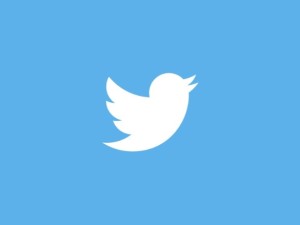
At the Gartner Symposium earlier in October, Gartner’s analysts identified 10 of the biggest tech trends to watch out for in 2015. To qualify, the trends were defined as:
“…[Ones] with the potential for significant impact on the organization in the next three years. Factors that denote significant impact include a high potential for disruption to the business, end users or IT, the need for a major investment, or the risk of being late to adopt. These technologies impact the organization’s long-term plans, programs and initiatives.”
These forecasted technology trends are meant to advise the IT initiatives of companies for the coming year. Thematically, the list covers ubiquitous intelligence systems, the fusion of “real” and “virtual” systems, and the technology that will be required to account for the shift of businesses into the digital sphere. There is significant overlap in these concepts, particularly concerning the pervasiveness of computing and how it ties in with IoT and the Cloud.
As defined by Gartner, the top 10 technology trends of 2015 are:
1. Computing Everywhere
This could really be the umbrella concept for most of the tech trends on this list, and others that are not listed here. Essentially, it’s an affirmation of mobile technology continuing to climb – and the hardware and services that are rising to engage mobile users beyond a singular device.
2. The Internet of Things
Gartner defines the Internet of Things in terms of four basic usage models for businesses to leverage: “Manage, Monetize, Operate and Extend.” As everything becomes digitized, everything from equipment to services to full systems can be monetized by the pay-per-use model, which ultimately trends towards being more appealing to the consumer.
3. 3D Printing
3D Printing has been a growing tech trend for a while now, and the analysts at Gartner expect that 2015 will be it’s biggest year yet – with worldwide shipments growing 98% in 2015, followed by a full doubling in 2016. Applications of 3D printing are expected to prevail in industrial manufacturing, biomedical and even the consumer spheres.
4. Advanced, Pervasive and Invisible Analytics
Taking a sensible approach to big data, this particular key point of the symposium highlighted “big answers” over “big data” to address the massive volume of analytics that will come with the rise of embedded systems and IoT. The big thing to consider is how to “deliver exactly the right answers at exactly the right time.”
5. Context-Rich Systems
Context-awareness isn’t a new tech trend – it’s been the goal of mobile technology for years, with software like Siri and Cortana featured on more recent mobile operating systems. Location-based services invited the idea that context could play a role in how tech is delivered, and this will only become a richer experience as various other types of embedded intelligence can peg down more information than just location.
6. Smart Machines
We start to see a hierarchy to Gartner’s trends, here, where context-rich systems and advanced analytics coalesce to provide the perfect conditions for a world of “smart machines.” HomeKit, Google’s Smart Car and other existing technologies provide the groundwork that will propel the new age of “machine helpers.” Gartner’s statement prophesies, “The smart machine era will be the most disruptive in the history of IT.”
7. Cloud/Client Computing
The first step for the cloud is to synchronize content in a way that allows for a growth of centrally coordinated applications, in the multi-device world. We’ve seen that emerging already in 2014 across the leading digital platforms, which paves the way for “simultaneous use of multiple devices” by a single application.
8. Software-Defined Applications and Infrastructure
Focus is needed to build and infrastructure dependent more upon software-defined application delivery (SDAD), that can shift rapidly and dynamically to meet the changing demands of digital business. Brittle and static hardware-reliant architecture will not meet the needs of the modern, mobile business, which needs an intelligent system that can configure elements programmatically and ‘on-the-fly.’
9. Web-Scale IT
In case there were any doubts, the days of IT living in a company’s basement are over. Web-scale IT is a Gartner-defined trend that is present and ever evolving. If you need an example, turn to Amazon, Google, Rackspace, or Netflix – to name just a few. DevOps is one way to achieve this – that is, bringing development and operations together – but there is more to the perfect formula that involves a collaborative organization, a learning culture, industrial-level data centers and holistically-implemented agile processes.
10. Risk-Based Security and Self-Protection
Security needs grow tremendously each day, and they have evolved past the Band-Aid of perimeter and firewall protections. For 2015 and beyond, developers will have to learn advanced ways to make their applications “self-aware” and “self-protecting.” As for the infrastructure – prioritizing security based upon risk will be the most effective way of ensuring security is there when you need it.





